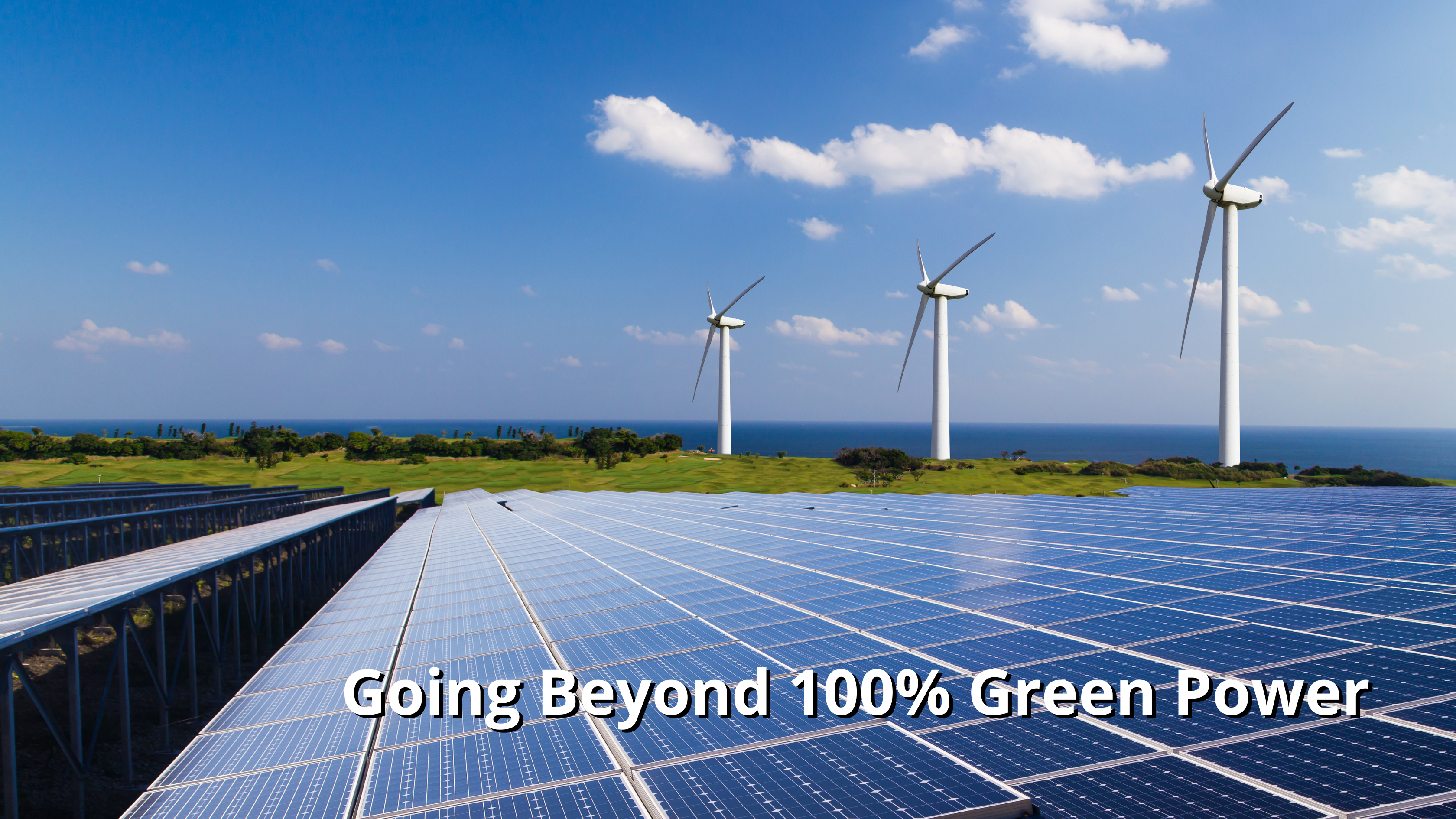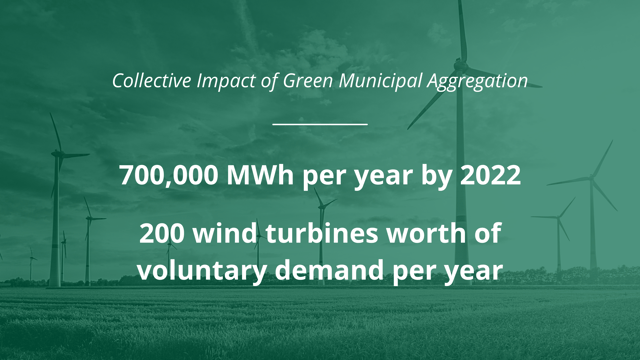Communities are demanding more renewable energy—and they're getting it.
We take great pride in the fact that we, along with a company called Good Energy, took the model of municipal...

As wind and solar projects proliferate and people acknowledge the benefits of renewable energy, more consumers are voluntarily choosing 100 percent green power. Some have done that through our Green Powered program and others through their city or town municipal aggregations (also known as community choice programs). If you are in that growing minority, we applaud you. But please consider going above and beyond 100%. This blog explains why and how easy it is to do.
You might be thinking, “Last month, my electric bill said I used 573 kilowatt hours. How can I get more than that delivered to my house?”
Actually, you won’t get more than 573 kilowatt hours of electrons – the stuff that makes your lights bright. However, we have a system in New England that allows you to buy Renewable Energy Certificates (RECs). You can buy as many or as little as you want with or separate from your utility bill. For every REC you buy, there is a tracking system called the Generation Information System ensuring that a generator produced 1000 kilowatt hours, or 1 megawatt hour on your behalf. The purpose of the REC is to provide renewable energy producers with an incentive beyond the value of the electrons. The system also allows us to prevent double counting, so that the REC you buy is unavailable to the utility which has to buy RECs to meet state law.

The system allows you to buy more RECs than your actual electricity usage. If you do that, everyone else’s usage will be greener than it would otherwise be. Multiply that by tens of thousands and we see a big impact.

If you are buying RECs through us, the percentage you are getting is always on top of what the current mandate is. Our program is about creating additionality, not helping the utilities comply with the law.
Almost all of us are heating our homes and businesses with oil or gas. And driving our cars on petroleum. When we get on a plane, our footprint really gets big.
Look at the EPA’s Household Carbon Footprint Calculator. It shows that driving a car that gets 30 miles per gallon of gasoline for 10,000 miles emits about the same amount of carbon as household electricity usage in New England (if you are not purchasing green power). Many households burn more gasoline than that. If you heat with oil, propane, or natural gas, that produces about four (4) times more carbon than typical electricity usage.
Another useful calculator is from the Cool Climate Network. It’s a more comprehensive tool that factors in air travel, food, and purchased goods and services. If you account for all those things, electricity (if it’s not green power) might be as little as one-tenth of the footprint of your typical four-person household in New England. Here’s an example screenshot:

Every house is different, so your numbers will be different. But the point is that even if you buy 100 percent green power, you’ve still got work to do on your carbon footprint.
Informed by the calculators, we can see how important it is to switch from internal combustion engines to electric vehicles (EVs). That’s why we have our Drive Green program!
For your home, it’s always a good idea to insulate and take other energy efficiency measures. A big step that would involve some research on your part would be to install high-efficiency heat pumps.
We strongly encourage you to consider both of those things, which we call “beneficial electrification.” Adoption of EVs and heat pumps are growing, but not as fast as we need. Maybe you will get around to doing one or both eventually. But in the meantime, buying more than 100 percent green power is a simple, effective option.
When you buy RECs, regardless of what your electricity consumption is doing (it could be zero!) a wind or solar generator has to produce power to meet your demand and, in doing so, it will knock that amount of fossil fuels off the grid. Here’s an example: if you buy 200 percent green power, half of those RECs will go directly towards meeting your electricity demand and half will go to further clean up the grid and thereby offset part of your footprint caused by home heating, driving on gasoline, or flying.
You might already be getting 100% green power from us or from your city or town’s green municipal aggregation (also known as community choice energy and similar names), which is a model we pioneered in 2016. That’s okay. If you want to buy more RECs to reduce your carbon footprint, we’ll buy them from generators to meet your demand. That’s what we’ve been doing for over two decades. You can sign up here, regardless of where you live or which company is your electricity supplier.
And if you are particularly concerned about the carbon footprint of your air travel (past or future), we have partnered with Jet-Set Offset, which is working to make travel more sustainable. You can sign up through Jet-Set Offset, choose Green Energy Consumers Alliance, and we will retire RECs to offset a portion of your travel.

If you itemize charitable deductions on your federal tax return, the Internal Revenue Service allows you to deduct payments you make to the Green Energy Consumers Alliance for green power. That’s because the Renewable Energy Certificates are a public good and you are not getting any private benefit.
This is simple. If you can afford to pay a little more to reduce pollution, remember that there are people who less fortunate.
We take great pride in the fact that we, along with a company called Good Energy, took the model of municipal...
For a couple decades now, we've offered consumers an easy way to have their electricity usage met by renewable...
Comments